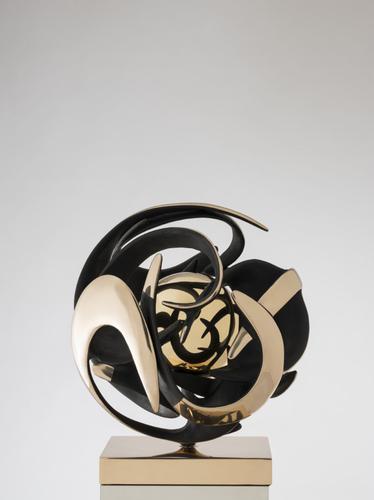Gianfranco Meggiato is an Italian sculptor born in Venice in 1963. He studied at the Istituto Statale d'Arte where he learned how to work with stone, bronze, wood and ceramics. When he was 16 years old he was invited for the first time to exhibit at the Galleria Comunale Bevilacqua La Masa in Piazza San Marco. Since then he exhibited all over the world, among the others at the Correr Museum in Venice and at the Senate building in Milan; he made an installation on the Breath Building GEOX in Milan; he was invited twice to show his works at the Venice Biennale; his Sfera Enigma was presented to Prince Albert of Monaco and then installed at the port of Monte Carlo; the Lu.C.C.A. Center of Contemporary Art invited him to participate in the group show “Inquieto Novecento: Vedova, Vasarely, Christo, Cattelan, Hirst e la genesi del terzo millennio”; he made the scenography for the Opera "CARMEN".
Among the latest exhibitions we find: "
Zyz
Garden
" (2019), in Matera, on the occasion of Matera European Capital of Culture; "
L'Uomo Quantico: there is no future without memory
" (2021), in Agrigento, at The Valley of the Temples, where the artist inserted contemporary art in an archaeological context; "
The Breath of Form
" (2022), in Pisa, where his works were located in various points of the historic centre and inside the Church of Santa Maria della Spina; "
The Encounter. Symbol of Peace
" (2023), in Rome, in Piazza Cavour, as a manifesto in favour of peace and the union of peoples, against all forms of discrimination and war.
Thanks to this works he won the prestigious ICOMOS-UNESCO award "
for having masterfully combined ancient and contemporary in sculptural installations of great evocative power and aesthetic value
" twice, in 2017 and 2022.
For his artworks, Meggiato takes inspiration from the great masters of the 20th century: Brancusi for his quest for the essential, Moore for his conception of inside and outside relationship, Calder for openness to space.
Starting from these premises, he invented the concept of “ introsculpture ”, for which the observer must not stop at the surface, but look at the inner aspects of the sculpture. In this way his works appear as mazes in which people get lost in order to discover themselves and their inner spheres . “On a formal level space and light border the work, sliding over it as if it were in-the-round; they penetrate inside it, wrapping its lattices and tangles, reaching the point of illuminating the central sphere as the ideal point of arrival .”

